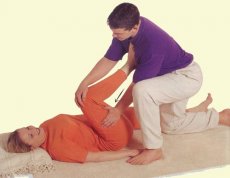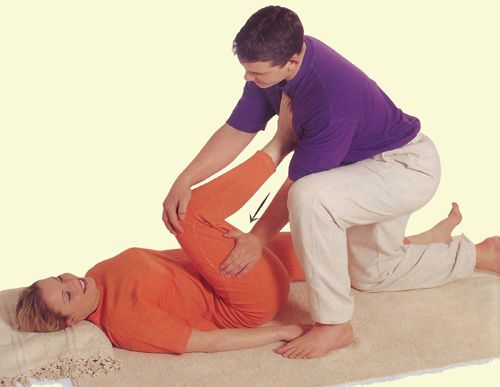Medical expert of the article
New publications
Sciatic pain
Last reviewed: 04.07.2025

All iLive content is medically reviewed or fact checked to ensure as much factual accuracy as possible.
We have strict sourcing guidelines and only link to reputable media sites, academic research institutions and, whenever possible, medically peer reviewed studies. Note that the numbers in parentheses ([1], [2], etc.) are clickable links to these studies.
If you feel that any of our content is inaccurate, out-of-date, or otherwise questionable, please select it and press Ctrl + Enter.

Diseases that cause sciatic pain
Sciatic nerve affected by neuralgia. The symptoms of this disease are gluteal pain that radiates to the thigh (its back surface) and even reaches the feet. The leg in this case goes numb and does not react even if you prick it with a needle. The muscles of the leg are weak, almost paralyzed, and can cramp.
Sciatic pain can vary in nature: sharp or mild, lasting a long time and passing within a short time.
A characteristic symptom of sciatic pain is that the doctor tries to straighten the patient's leg while he is lying down, but straightening does not work, the leg muscles contract, and the patient experiences pain in the buttocks and thigh.
 [ 6 ], [ 7 ], [ 8 ], [ 9 ], [ 10 ]
[ 6 ], [ 7 ], [ 8 ], [ 9 ], [ 10 ]
What causes sciatic pain?
The culprit is the sciatic nerve, the largest in our body. It starts from the nerve plexus of the sacrum, then its path passes under the muscle tissue of the buttocks along the back of the thigh. When the sciatic nerve reaches the popliteal fossa, it bifurcates and goes a little higher.
Thanks to the sciatic nerve, we feel our legs, the skin on them, their muscles. The sciatic nerve helps to conduct impulses (including pain) throughout the entire area of the leg. It is involved in the work of the muscles that move the torso and hips.
Thanks to this nerve we can move our legs and lift our feet.
Causes of sciatic nerve compression
When the sciatic nervebecomes compressed, doctors call it carpal tunnel syndrome.
This situation is provoked by inflammation and chronic diseases of the joints, kidneys, as well as the culprits - flat feet, injuries (even past ones) or injections into the gluteal muscle, carried out unsuccessfully. Have you seen how people sometimes drag their leg after an injection? This is a temporary inoperability of the sciatic nerve, which was hit with a needle and immobilized the entire leg.
When the sciatic nerve is affected or compressed, it can lead to severe pain in the feet, inability to walk. Not severe, but constant pain in the buttocks and radiating to the leg can bother a person after injuries, fractures. Then movements can be difficult even with slight pain. If you do not seek medical treatment, the muscles can gradually atrophy, since they are constantly affected by the protruding parts of the vertebrae.
If the skin on your legs is too dry, small ulcers open up, and you are bothered by pain in the buttocks and feet, you should see a doctor for additional examination. These may be symptoms of sciatic nerve impingement.
Diseases that speed up or slow down metabolism can also interfere with the sciatic nerve. These are diseases such as thyroid dysfunction, poisoning after which a person has not been treated, strict diets.
There is also a special type of herpes that affects the sciatic nerve in the most negative way. With herpes, lichens appear, which are located along the entire perimeter of the sciatic nerve and cause pain. Without an examination, it is quite difficult to determine the cause of this pain.
Where does sciatic nerve pain come from and why does it occur?
The primary reason why the sciatic nerve bothers us with pain is pressure on it. This can be determined by symptoms. For example, a sharp pain in the leg and buttocks (this means that one of the spinal roots of the sacral nerve plexus is compressed). This pain can intensify even if a person starts coughing or sneezing.
The same sharp pain occurs when the disc is deformed and herniated.
In addition to pain, a person experiences the following: sensitivity in the leg disappears (already in the first day of inflammation or compression of the sciatic nerve). The muscles are weak, do not react to anything, the pain increases, and osteochondrosis can only worsen the course of the disease.
The root is compressed even more and hurts. If the nerve roots are pinched by the growing sharp teeth in the area of the discs and vertebrae, and the person does not seek medical attention, but endures, then the muscles gradually atrophy and lose their properties.
Who to contact?
How to determine if the sciatic nerve is deformed and inflamed?

For this purpose, several types of diagnostics can be used, which will give a complete picture of your disease.
X-ray
It should be done in the lumbar and sacral region. X-rays provide an accurate picture of the condition of the vertebrae, determine whether they are deformed and whether there are any growths pressing on the nerve roots.
During radiography, it is good if the person does not lie down, but bends and straightens his legs (these are called functional tests). With such tests, it is more likely to detect disorders in the condition of the spinal canal, discs, sciatic nerve, and adjacent vertebrae.
If the picture is unclear, a contrast agent will be required, which is injected into the spinal canal. Then it is easy to see if there are any abnormalities in its condition.
Computed tomography (CT)
With this method, you can clearly see the condition of not only the bones, but also the vertebrae and the discs located between the vertebrae.
If there are tumors or signs of injury between or near the disks, they can be immediately identified on CT. As well as the treatment method in this case.
 [ 14 ], [ 15 ], [ 16 ], [ 17 ], [ 18 ]
[ 14 ], [ 15 ], [ 16 ], [ 17 ], [ 18 ]
Magnetic resonance imaging (MRI)
This diagnostic method allows you to get a picture of the condition of the spinal cord, vertebrae and muscle tissue around them. If the sciatic nerve is injured or compressed, the diagnostics will show this.
Electromyography
This diagnostic method will characterize the sciatic nerve and the nerve endings located nearby using electrical impulses. The doctor will also see an accurate picture of muscle activity or atrophy, since he will check their impulses using currents of varying strength.

